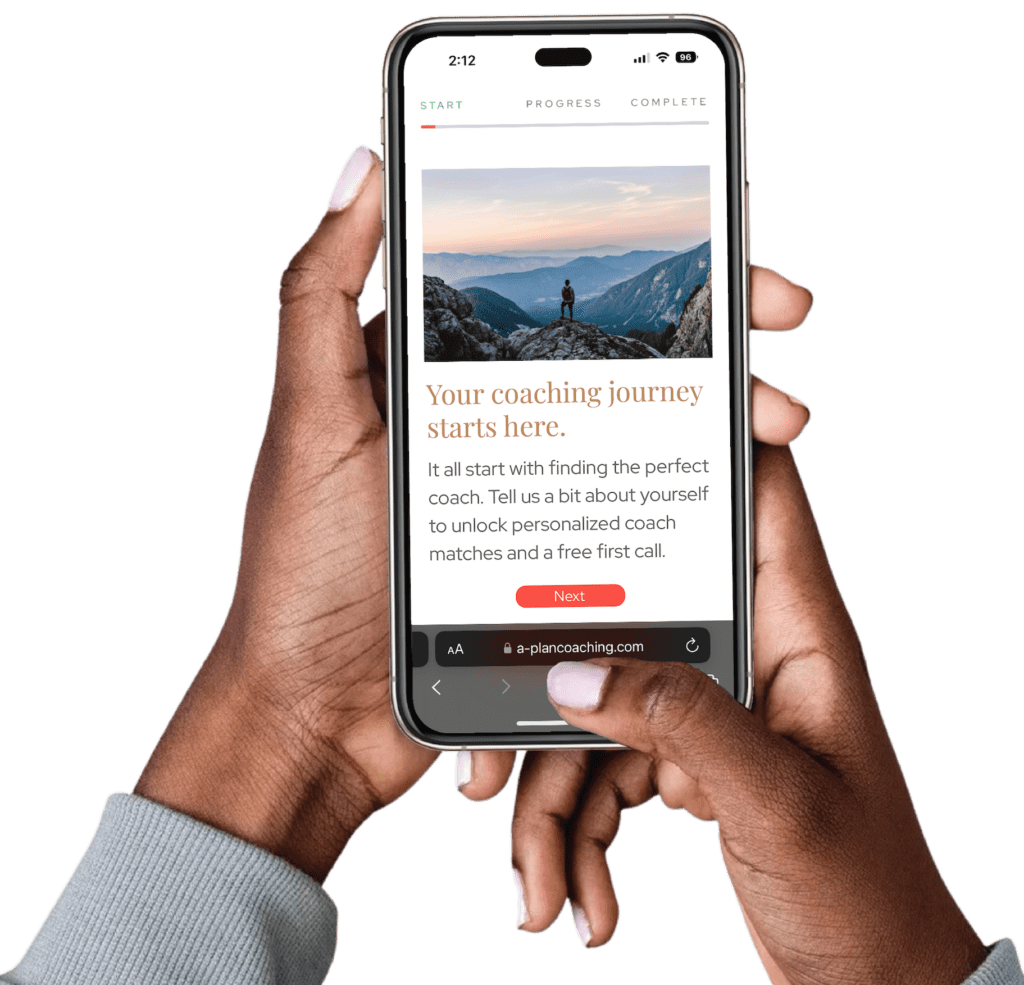Jump to section…

Imagine a healthier, more engaged, and more productive version of your organization. What changes would you need to make to get there? Many leaders—CEOs, managers, and HR professionals—identify common areas for improvement, such as:
- More effective leadership and team empowerment
- Increased employee engagement, collaboration, and productivity
- Stronger commitment to company values
- Greater respect for work-life balance
- Higher employee retention
The real challenge is recognizing these areas for growth and implementing meaningful, lasting change. This is where organizational coaching comes in—not as a luxury but as a strategic investment in organizational development and success.
The Hidden Costs of a Struggling Culture
When workplace culture suffers, organizations experience disengaged employees, retention struggles, reduced morale, and a diminished reputation. Common causes include:
1. Lack of Clarity on Goals and Career Paths
To stay productive and engaged, employees need a clear sense of their goals and career path to motivate them to keep making progress – toward their individual goals and the organization’s goals.
2. Managers Lacking Leadership Development
Managing people is a learned skill, yet many managers receive little to no formal training. Without support, trust and communication break down, leaving employees without strong role models or clear guidance.
3. Misalignment Between Company and Employee Values
A lack of alignment between organizational goals and employees’ personal values leads to disengagement. When leadership fails to champion well-being, transparency, or social responsibility, team members may become disillusioned, eventually seeking opportunities elsewhere that better align with their ideals.
Organizations face these organizational challenges, but ignoring them can lead to significant costs. Addressing these issues proactively with coaching programs is a way forward.
Coaching: The Key to Thriving Organizations
Organizational coaching provides a structured coaching process to foster healthy workplace environments and culture through self-awareness, professional development, and actionable change. Whether through team coaching, executive coaching, or targeted interventions, coaching equips employees with tools to create meaningful, measurable improvements.
A recent McKinsey & Company study (2023) found that companies with effective coaching programs are 1.6x more likely to report higher employee productivity and 2.3x more likely to report better financial performance.
The benefits of organizational coaching aren’t theoretical—they’re real-world, data-backed outcomes that directly impact profitability, employee retention, and organizational change.
Types of Coaching Programs Organizations Benefit From
Executive Coaching
This is focused on enhancing leadership performance, strategic thinking, and accountability. A certified coach helps leaders work through challenges, leading to better decision-making and organizational alignment.
Team Coaching
This is ideal for fostering collaboration, overcoming silos, and increasing team alignment. A professional coach works with groups to identify shared goals, improve communication, and strengthen team dynamics.
Leadership Coaching
This enables managers and emerging leaders to develop competencies like emotional intelligence, coaching skills, and effective delegation, which drive cultural transformation.
Internal Coaching
This establishes a culture of coaching throughout the entire organization, enhancing access to mentorship opportunities and continuous improvement.
These types of coaching offer versatility and adaptability to meet organizational needs.
How a)plan Coaching Supports Organizations
At a)plan coaching, we tailor development programs to align coaching engagements with unique company objectives. Here’s how the coaching process works:
- Defining the Coaching Audience: Is coaching intended for executives, managers, underrepresented employees, or the entire organization? We design programs tailored to your audience’s needs, from leadership development to team coaching sessions.
- Customizing the Coaching Format: Whether delivered virtually via video calls or through our proprietary coaching app, we provide accessible coaching options that enable team members to thrive.
- Aligning Coaching with Organizational Goals: To maximize impact, we link coaching initiatives directly to organizational goals, such as improving leadership skills, enhancing employee retention, and fostering cultural change.
Coaching in Action
Organizations partnering with a)plan benefit from:
- Weekly one-on-one coaching sessions
- Flexible, fully virtual coaching via video or phone
- A proprietary coaching app for tracking progress
- Unlimited texting access to coaches
By merging structured coaching engagements with action plans rooted in organizational challenges, we provide a clear roadmap to success. Coaching is more than just professional development—it’s a tool for fostering an environment where employees feel heard, valued, and empowered to contribute to a shared vision.
The ROI of Coaching: From Wish List to Reality
When coaching is integrated into company culture, organizations see measurable improvements in employee satisfaction, leadership effectiveness, and overall performance. It turns the wish list of workplace improvements into a reality, making coaching not just a nice-to-have but a must-have for forward-thinking organizations.
Coaching is a critical component of long-term success as companies continue to seek ways to attract and retain top talent while fostering a positive culture. Investing in coaching today paves the way for a thriving, resilient, and engaged workforce tomorrow.
For a deeper dive into how coaching strengthens organizations, check out our blog, Your Guide to Building a Healthier Organization with Coaching.

Interested in organizational coaching?
FAQs About Coaching in Organizations
What is Organizational Coaching?
Organizational coaching enhances workplace performance and organizational culture by addressing development areas like leadership skills, communication, and team alignment.
How Can Organizational Coaching Improve Workplace Performance?
Organizational coaching transforms challenges into opportunities for growth by improving self-awareness, strengthening decision-making abilities, and aligning team members around shared objectives. This leads to measurable improvements in processes, productivity, and profitability.
What Is the Difference Between Organizational Coaching and Team Coaching?
Organizational coaching focuses on broader organizational development, whereas team coaching focuses on aligning specific teams to achieve common goals and overcome unique obstacles, such as miscommunication or lack of collaboration.
Who Should Enroll in Leadership Coaching for Organizational Performance?
Anyone ready to enhance their leadership skills, from executives to mid-level managers, can benefit from this process. Leaders who value personal development and want to inspire their teams find it especially engaging.
How to Become an Organizational Coach?
Start with a coaching certification from an accredited program, such as through the International Coaching Federation (ICF). Gaining hands-on experience and continuous coach training will further establish successful coaching practices.
What Are the Key Types of Coaching for Organizations?
The four main types are:
- Executive coaching for leadership refinement
- Team coaching for alignment and collaboration
- Leadership coaching for personal and professional growth
- Internal coaching to foster a coaching culture
What Career Paths Exist in Coaching?
From executive coaching to consulting in organizational change, opportunities for certified coaches span industries and functions.
What are the Core Components of Coaching Programs?
Key aspects include goal definition, progress tracking using metrics, consistent coach education, and action-oriented feedback for measurable success.
